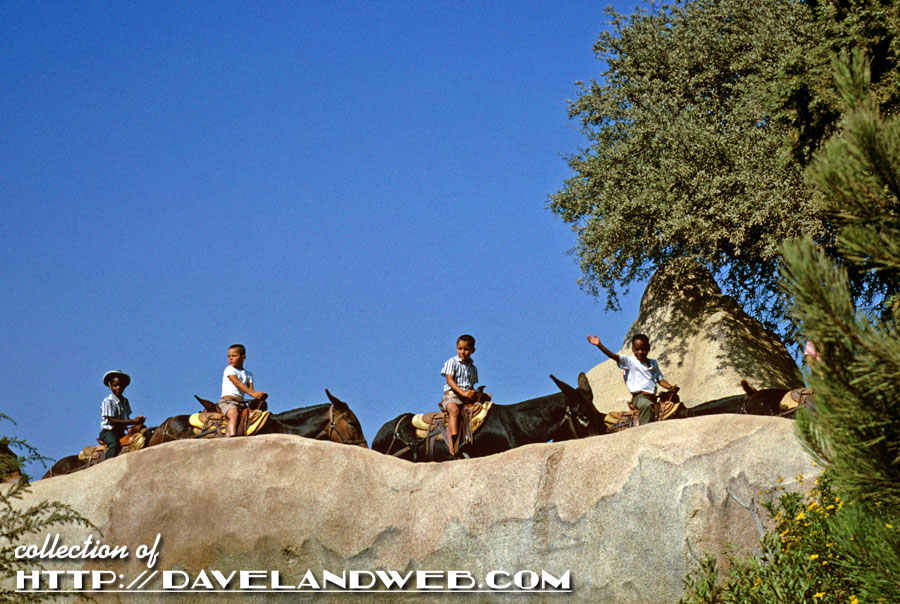
We continue our tour of The Nature's Wonderland attraction with Part Five of Bob Weaver's memories:
The train then went through Natural Arch Bridge, kind of like something you would see at Canyonlands or Arches National Parks. When the Pack Mules attraction was still in operation (1956-1973), you would sometimes see people riding the live mules across the top of the Natural Arch Bridge. Entry through this bridge signaled a complete change in environment from the lush, leafy, watery world to the barren, dry desert world. This area was called the Living Desert, named after the 1953 Disney-produced documentary film. This large area had sparse vegetation, but plenty of rock formations, modeled after the red sandstone rock of the American southwest deserts. Some parts of it were reminiscent of Bryce Canyon National Park.
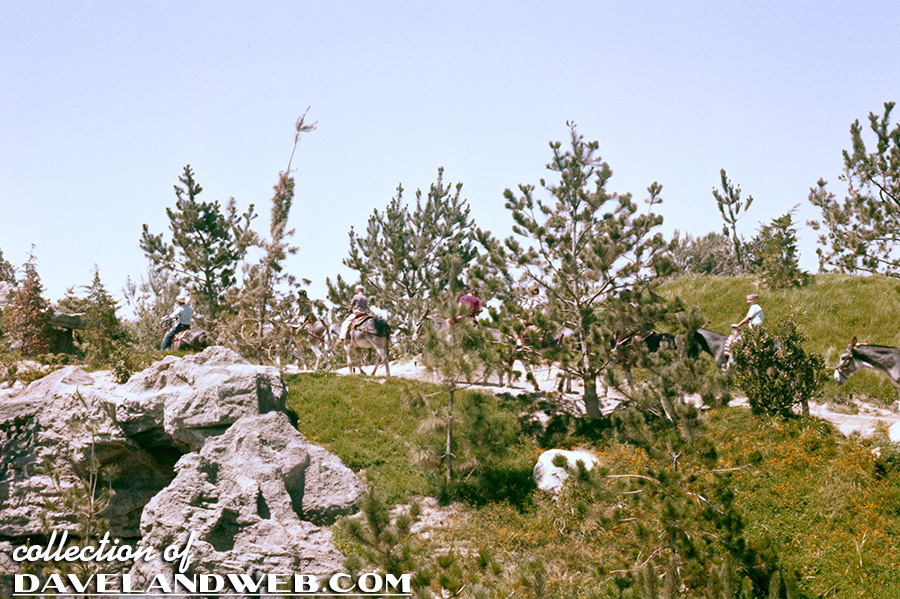
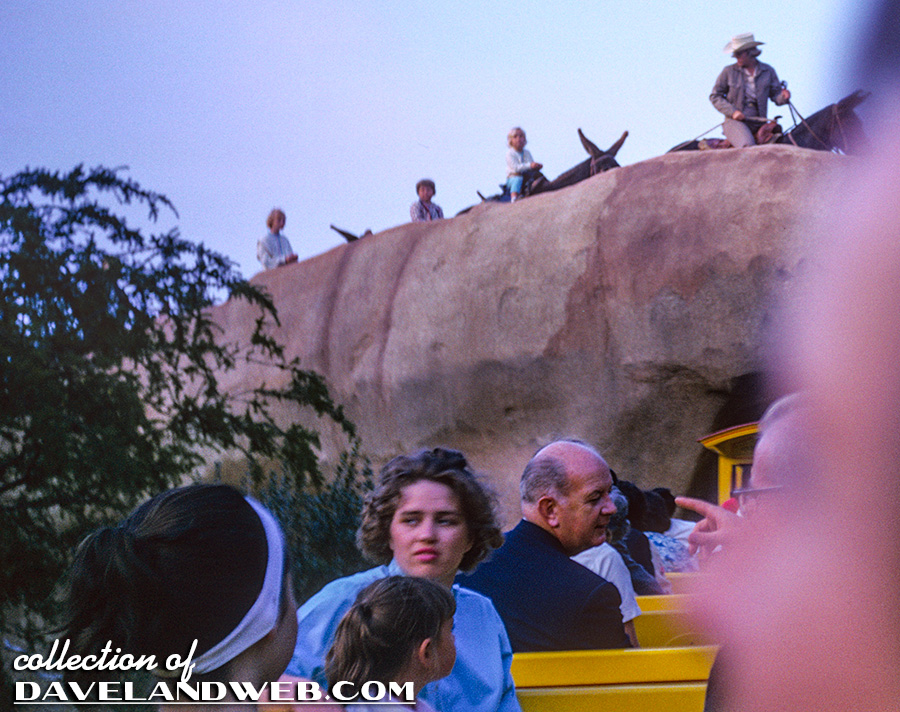
The train went through a (fake) saguaro cactus forest, designed to look like Saguaro National Monument (now National Park) near Tucson, Arizona. Many of the fake saguaros were deliberately designed to suggest the shapes of people, with arms pointing up or down and facial features consisting of holes in the "cactus" in the right locations. There were shorter ones too, more like barrel cacti, with short "arms" and the same "eyes" punched as holes, and these had white tufts of hair on top. There may well have been some real, live saguaro cacti planted amidst the fake ones, and a few other types of cacti planted just as landscaping, though I'm not really sure. Looking at pictures now I see some Joshua trees and those might have been live.
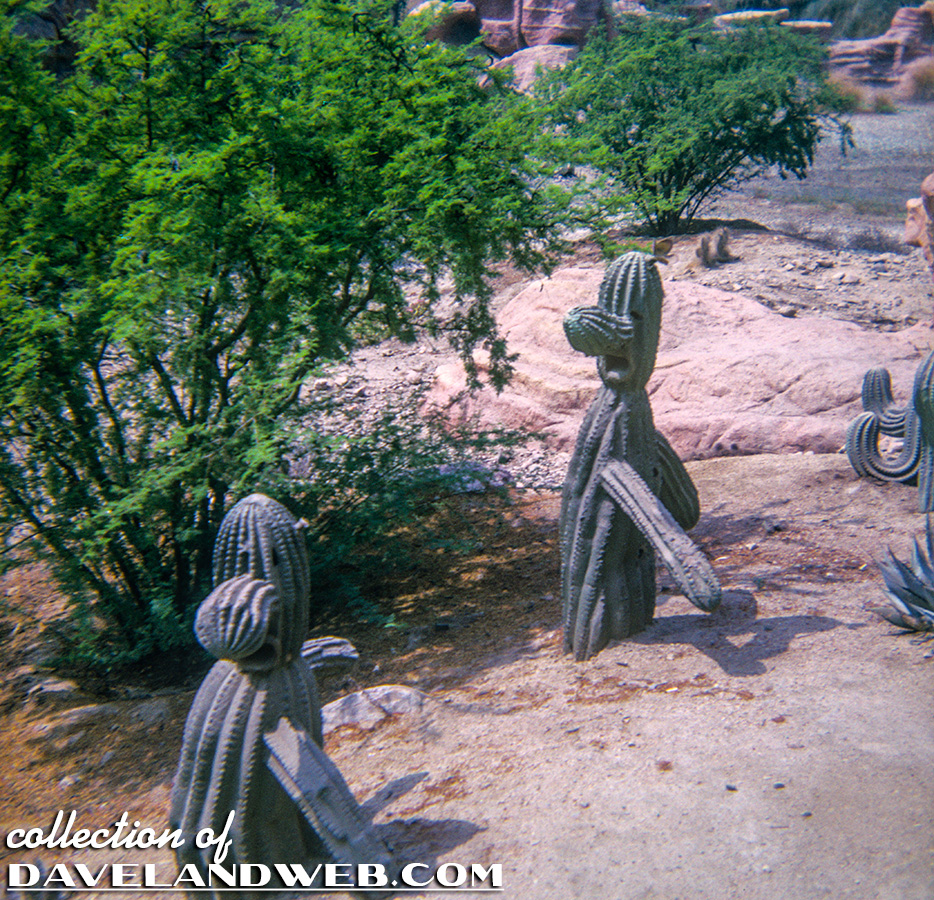
This part of the attraction was pretty unconvincing, cartoonish and corny, compared to some of the things that came before and were to come later. An attempt at comedy was made by showing some small wild pigs or warthogs cornering a bobcat which was at the top of one of the saguaro, looking down at them with its head turning slightly. The cat didn't seem to be bothered by the cactus needles which were probably sticking into its paws. There were a couple of large rocks and on top of them, fake rattlesnakes whose heads would bobble back and forth as if they were about to strike. You expected them to suddenly lash out at a passenger any second, but all they did was move their heads back and forth. There was a roadrunner and snake poised facing each other in a kind of standoff. A coyote stood atop another rock and there was a mountain lion crouched and ready to pounce, atop another rock. These were actually fairly well done and realistic looking models, though nobody was genuinely fooled into thinking they were live animals. The fact that they either didn't move or had only awkward mechanical movements was the giveaway. But it could be argued that the area did have some educational value as to what types of wildlife could survive in a desert.
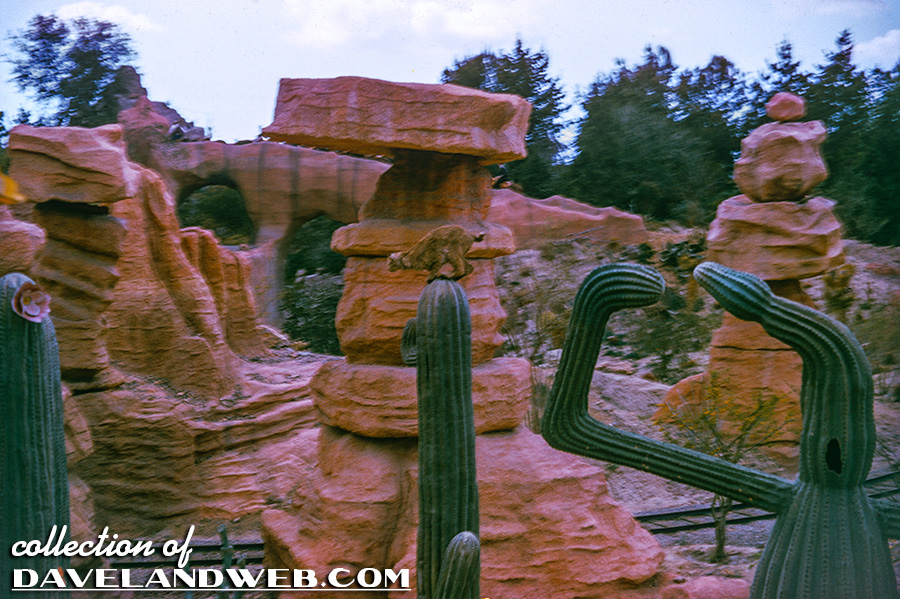
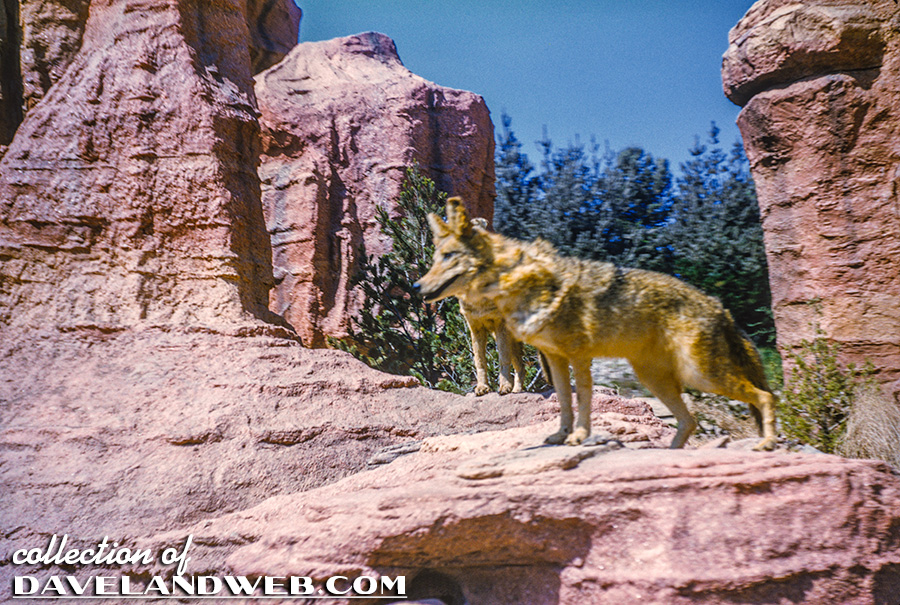
The train then moved into a very entertaining and fun area, but one which was also highly fanciful and not really accurate in my opinion. First you saw a group of about 10 bubbling "paint pots" in different colors (blue, red, green, yellow, orange and pink as I recall, but color photos could prove what the actual colors were). Inside each pot it looked like paint that was boiling, and bubbles would emerge and splatter a little, but not so much that it got into an adjacent pot. When a bubble would surface and open you could hear a "plop" sound but it was not that loud. I was fascinated by these and to this day I still wonder how they created the effect in such a way that it could be maintained for years without clogging up or breaking down. Apparently it was inspired by the Fountain Paint Pots and Artist's Paint Pots in Yellowstone National Park, but when I finally made it to Yellowstone years later, I realized the colors of the real ones at Yellowstone were much more subtle than the bright colors of the fake ones at Disneyland. The real Fountain Paint Pots are just gray mud with tints of different colors, although they do have the same action during some months. Oh well, another Disney-borne childhood dream shattered by reality!
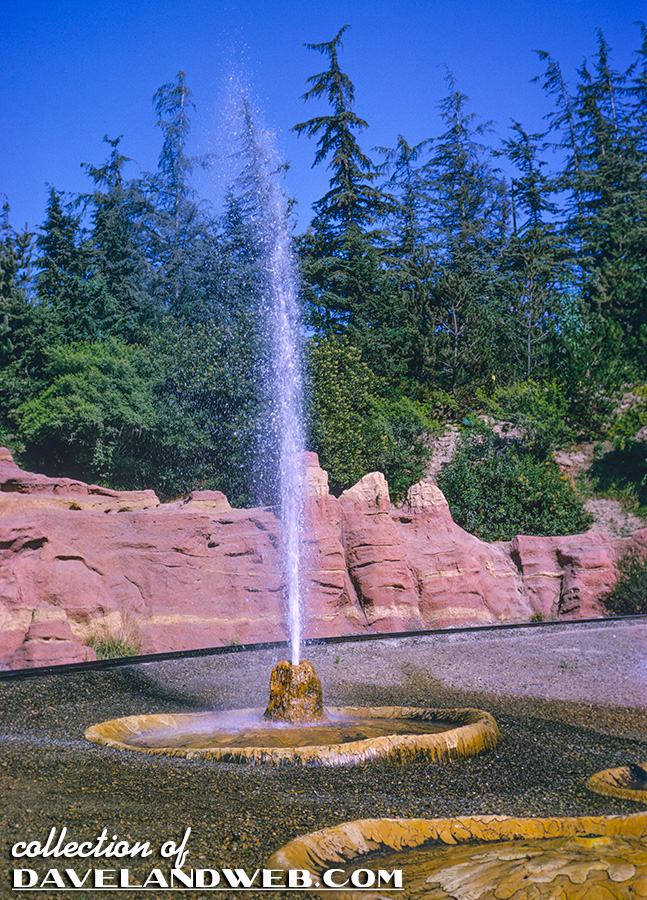
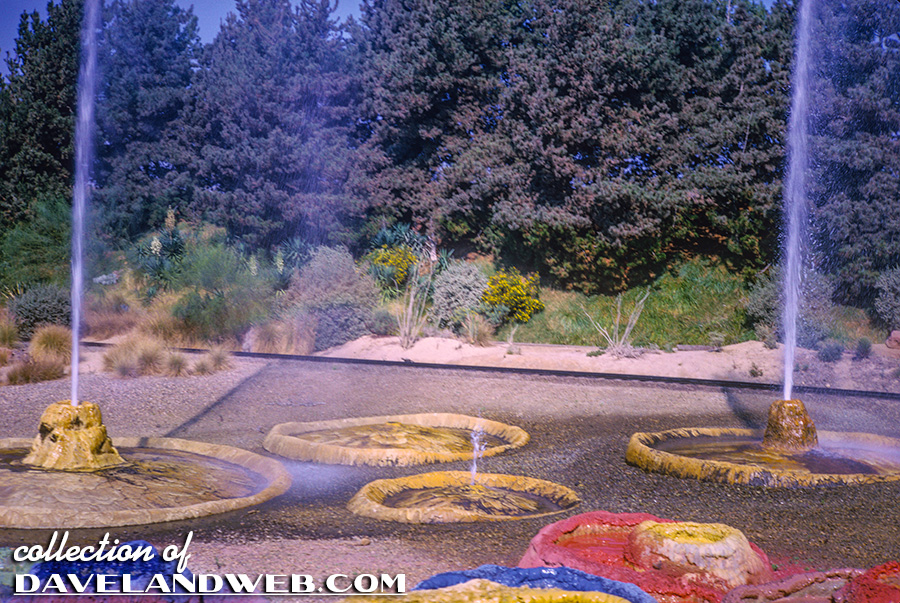
Right next to the bubbling pots were three geysers, also clearly inspired by Yellowstone. (There was a tiny 4th one too). The biggest one of the 3 large ones was named Old Unfaithful, a direct reference to the famous Old Faithful geyser of Yellowstone. However if they really wanted to pay tribute to Yellowstone, they would have located the geyser in another section of the ride such as Beaver Valley or Bear River, instead of the Living Desert, because Yellowstone is not a desert. There are a few geysers in deserts but for the most part, geysers are located where rainfall or other sources of water are plentiful (same for the paint pots, for that matter - if they were in an actual desert, they would be bone dry and cracked). But Disneyland has never been about fact-checking; it has always been about believing, and the geysers were one of the most entertaining points of the ride. When you first saw them, as the train was over by the paint pots, all 3 were going. But by the time the train got to them, they had subsided to the point where they were basically off. The narrator described it as "Old Unfaithful" and remarked that they were likely to blow at any time. "You folks in them last cars be ready... she's a-threatenin' agin!" And sure enough, just as the train was about to leave the geysers behind, the big one did go off suddenly, causing a shriek from the people in the last couple of cars. It didn't actually hit the train with water, but if the wind was blowing the right way, a pretty good dose of spray would blow over and they would definitely get a good misting. On a hot dry summer day that might have been very welcome.
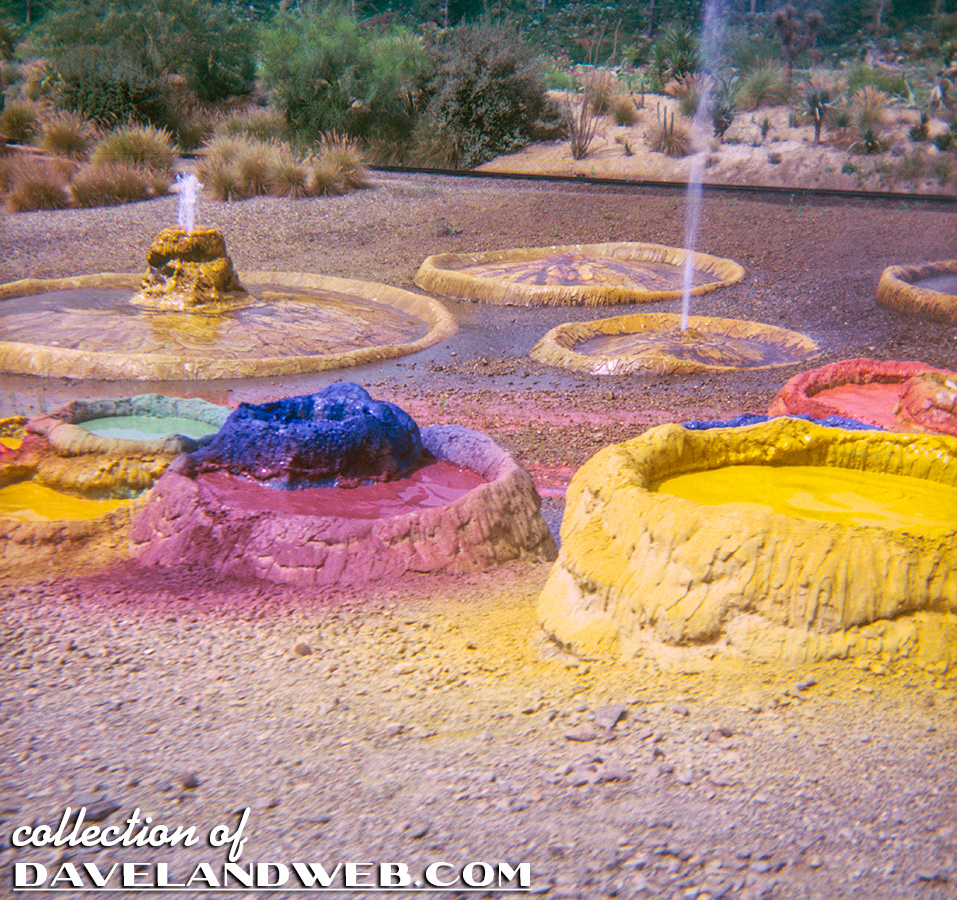
Everyone else on the train laughed at the misfortune of the people in the last car. In earlier years, the Disneyland Railroad passed by this area, so there was a chance that if a Mine Train and the Disneyland Railroad were both passing through at the same time, people on the two rides could see each other, and do the waving thing. And I think that part of the narration on the Disneyland Railroad did mention the Living Desert in Frontierland, though I'm not sure. However at some point the track for the Disneyland Railroad was rerouted and the new route did not give a view of the Living Desert. Being on one attraction and seeing guests on a different one at the same time made you realize the genius and beauty of the park's design. Basically that could only happen in Tomorrowland and Frontierland; two areas where ride routes often intertwined or at least came close together. The last time I was on the railroad I looked for the Living Desert, but could not find any sign left of the desert. In its place is the backstage are of of the Big Thunder Ranch stage. I think there are remnants of the reddish sandstone rocks and buttes at Big Thunder Ranch now, but most of it is gone. The fate of the animals is heartbreaking: after years of neglect they all eventually died of various animatronic illnesses.
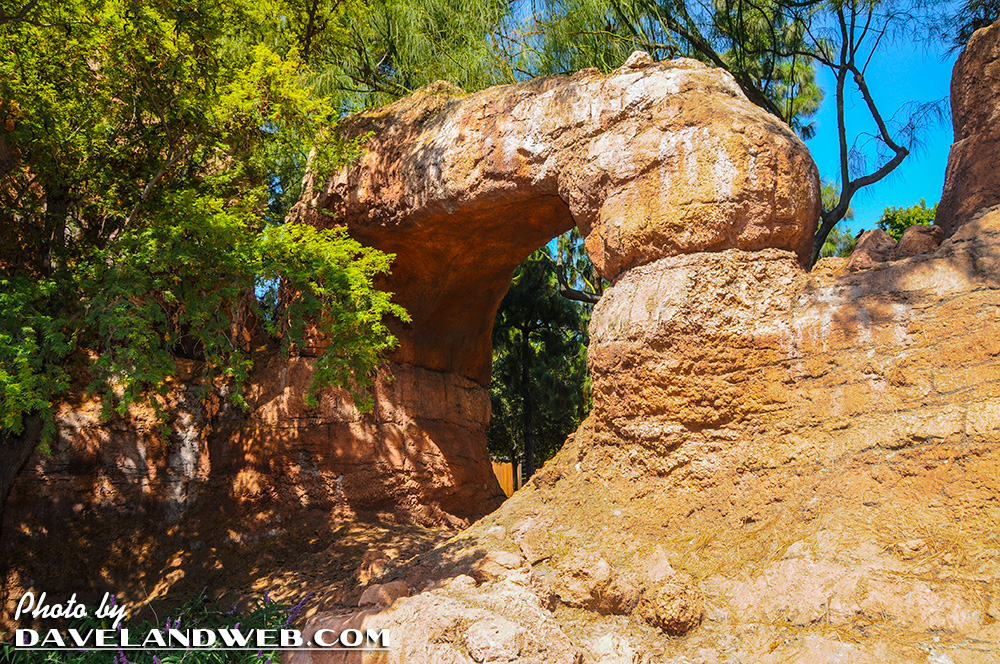
See more Disneyland Nature's Wonderland photos at my website.
More from the Disney Family Museum: Here is a preview of the next Gallery:
Gallery 9 - The 1950s and 1960s: The Big Screen and Beyond:
This prolific period of Walt’s life started with the installation of a scale model railroad on the grounds of his new home, an event that spurred him to develop Disneyland. Walt also created pioneering weekly television shows, and the studio continued creating both animated and live-action films, including the Academy Award™-winning Mary Poppins. Walt was also involved in developing new technologies for installations for the 1964-1965 World’s Fair. In the 1950s he announced his ideas for EPCOT, the Experimental Prototype Community of Tomorrow.
In a 15 year period, Walt created the templates for family television entertainment and outdoor family recreation while also infusing the promise of space exploration and urban planning with a sense of wonder and awe. From the Lilly Belle, the scale-model locomotive that Walt helped build and install on a half-mile track around his home, to the visionary plans for EPCOT, the exhibits in this gallery present a vivid look at the landscape of Walt’s imagination and achievements during the last 15 years of his life.
In addition to this, you will also find a press release for The Carolwood Foundation’s combine.
Download a factsheet on the museum.

6 comments:
Ah a Pt.5! Thank you Dave & Bob Weaver for sharing your memories and photos to give this detailed illustrated journey.
More great Mine Train memories! Bob should know that there is an old issue of Popular Mechanics (I think?) that describes how the bubbling paint pots were done. Vintage Disneyland Tickets had a great scan of the article.
Something I've always wondered (since 1965 anyway...) is if the geysers were streams of live water controlled by valves, or recycled water hooked up to pumps.
Dave and Bob, I will be sad when this N.W. series is over...it has been the next best thing to riding it again!
WDW has recreated the scene with the bobcat on top of the cactus and the wild boars around it, as well as the rattlesnake and the roadrunner "standoff." Both of these can be seen from their train when it passes through Frontierland. The rattlesnake and roadrunner vignette can also be seen in Tokyo Disneyland from their train. :-)
Hey Dave,
Don't know if you know this, but the internal plans for Mr. Lincoln's animatronics were drafted by Bob Gurr. He has an original blueprint, and the museum had a copy made. One doesn't immediately think of Bob when it comes to Mr. Lincoln (since his vehicles usually get the spotlight) but Bob designed most of the original Lincoln figure "workings."
Did you see the figure at the D23 Expo?
Kevin- I don't remember reading that! Thanks for the info. As for D23; after having been at Disney for the Half Marathon and the 40th, I just couldn't drive back up for the Expo. Too much to tend to back here.
Post a Comment